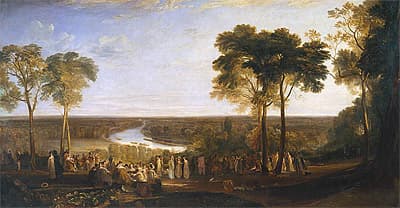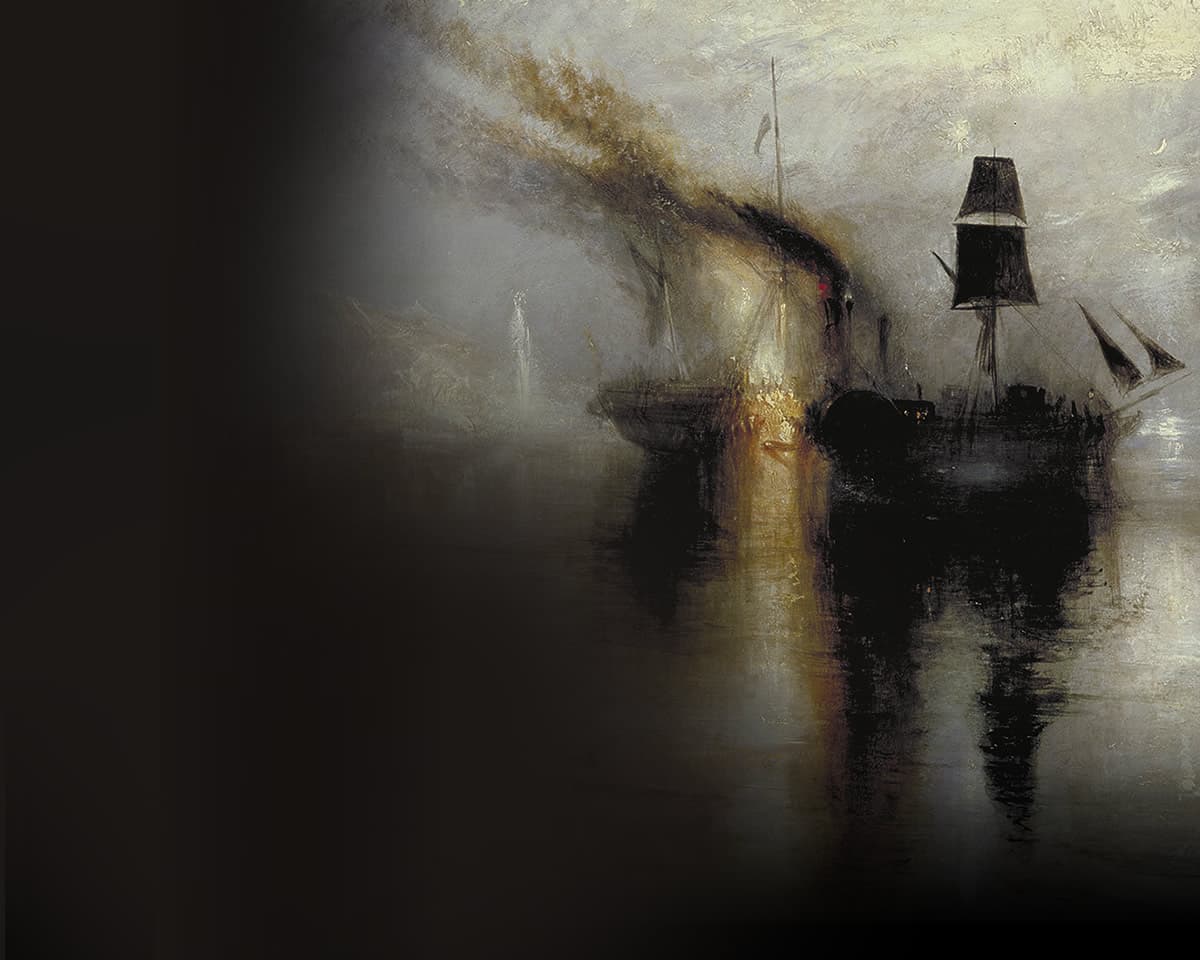
J M W
TURNER
Great Britain
1775
–
1851
180.0 (h) x 334.6 (w) cm Tate Accepted by the nation as part of the Turner Bequest 1856 Photo: © Tate 2013
Turner’s informal gathering of well-dressed men and women is set in a vast panoramic landscape, reminiscent of Claude Lorrain. Some of the figures seem to be based on those by Antoine Watteau, the French painter famous for his theatrical scenes of idyllic charm. The Prince Regent (later George IV) rode to Richmond Hill from Kew Palace on 10 August 1818, two days before his birthday. The Prince’s name day, St George’s Day on 23 April, was the official celebration of his birth, also Shakespeare’s birthday and supposedly Turner’s. The date may represent the England of the title.
Turner’s informal gathering of well-dressed men and women is set in a vast panoramic landscape, reminiscent of Claude Lorrain. Some of the figures seem to be based on those by Antoine Watteau, the French painter famous for his theatrical scenes of idyllic charm. The Prince Regent (later George IV) rode to Richmond Hill from Kew Palace on 10 August 1818, two days before his birthday. The Prince’s name day, St George’s Day on 23 April, was the official celebration of his birth, also Shakespeare’s birthday and supposedly Turner’s. The date may represent the England of the title.
Turner’s informal gathering of well-dressed men and women is set in a vast panoramic landscape, reminiscent of Claude Lorrain. Some of the figures seem to be based on those by Antoine Watteau, the French painter famous for his theatrical scenes of idyllic charm. The Prince Regent (later George IV) rode to Richmond Hill from Kew Palace on 10 August 1818, two days before his birthday. The Prince’s name day, St George’s Day on 23 April, was the official celebration of his birth, also Shakespeare’s birthday and supposedly Turner’s. The date may represent the England of the title.

